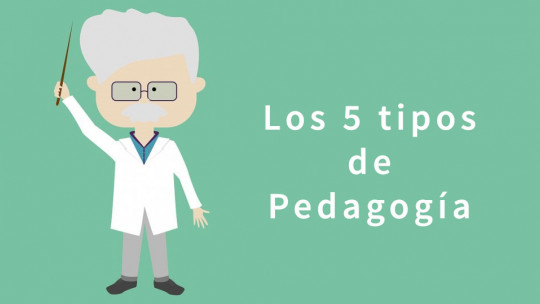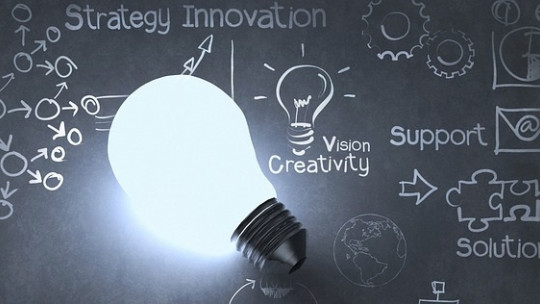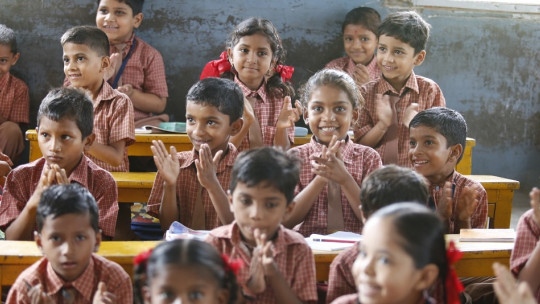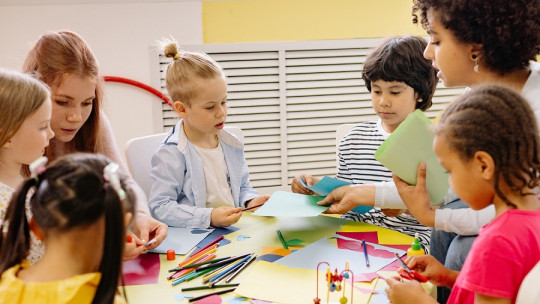
We hear a lot about Pedagogy, but… do we know exactly what it is?
It is the science that studies the methodology and teaching techniques that can be applied so that students learn. Like any science, it includes a series of differentiated branches.
In this article We will talk about the 6 branches of Pedagogy ; We will tell you what its fundamental characteristics are, its objectives and some examples of educational strategies used in each of these work areas.
What is Pedagogy?
Before delving into the 6 branches of Pedagogy, we are going to first explain what Pedagogy is. Is about the science that studies methodology and the different techniques that can be applied in teaching
Although teaching (and learning) lasts practically a lifetime, it is also true that it is in the childhood stage where it takes on special relevance, through schooling. That is why Pedagogy focuses especially on children’s learning, although it can also go further.
Through Pedagogy Methods are designed to teach students, as well as different educational strategies to enable learning For this, it is also essential to know the profile of each student (their interests, motivations, strengths, weaknesses, intelligence, abilities, etc.).
The branches of Pedagogy, summarized
Now, let’s see what the 6 branches of Pedagogy are, as well as their fundamental characteristics.
1. Experiential pedagogy
The first of the 6 branches of Pedagogy that we are going to explain is Experiential Pedagogy. This It is fundamentally based on the experiences of the students themselves to enrich their learning process That is, it uses these experiences (generally lived outside the school context) so that students learn and internalize values such as diversity and equality.
Furthermore, these life experiences can be very useful for raising debates in class, listening and expressing different opinions. It is through debates where students can broaden their perspective on things, that is, “broaden horizons.” Experiential Pedagogy seeks that.
On the other hand, this branch of Pedagogy relies on one’s own mistakes to grow, learn and evolve (in short, in life experiences).
Examples of educational practices that are part of Experiential Pedagogy are: using role plays to play different “roles” in class, showing videos on different topics, etc. Many of these resources also serve to work on empathy and what it would be like to live one experience or another in life.
2. Modeling pedagogy
The second of the 6 branches of Pedagogy is modeling pedagogy. In order to develop educational practices through this branch, a person is required to act as a model (i.e. someone expert in some topic, process, skill, etc.). It is also essential that what you want to transmit or teach is reproduced verbally or in images, but that it is explicit.
The function of the model will be to reproduce certain behaviors, actions, tasks and patterns that are intended to be taught to the student, so that the student also reproduces them. through imitation and internalization of explanations
The message that is transmitted through modeling pedagogy is that it can be taught through imitation and thanks to a person who is an expert in a topic, who transmits their knowledge to the students through language, their actions, etc.
If, in addition, said model (beyond the teachers, who are fundamental models) is well known and outstanding in some subject (that is, it enjoys a certain status), it is more likely that learning will occur, because its “reliability” increases in the eyes of the students. Logically, but learning is also influenced by the student’s motivations and abilities.
3. Differentiated pedagogy
Differentiated Pedagogy, another of the 6 branches of Pedagogy, seeks to enhance the learning of each student, individually and adapted to their level, age, abilities, difficulties etc.
That is, professionals who follow this branch use the available pedagogical resources (and if they do not exist, they create them) in order to adapt to the individual differences of each student; that is, to be able to teach in diversity.
Through adaptations of materials, curricular adaptations, individualized plans content adaptations and more, the aim is to maximize the student’s learning, as well as adapt to their interests, needs and abilities.
As a result of this reality, Differentiated Pedagogy is born, increasingly booming due to the great diversity of students, as well as the existence of so many learning and neurodevelopment disorders within the classroom.
4. Cybernetic pedagogy
Cybernetic Pedagogy uses different technologies to enhance student learning. That is, it is teach (or complement “normative” teaching through various technological resources such as: e-learning platforms, tablet or mobile apps, web pages, etc.
It is an undeniable reality that technology has improved our lives in some aspects (one of them, education), although it is true that its use must also be controlled for this improvement to be real. That is, everything in its proper measure. As a complementary tool to learning (and especially to make it easier for all students to have access to it) can be very effective. The most important thing is the professional, and the use that he/she makes of the different technological options available.
Furthermore, the technology It can also be used to increase student motivation, through videos, images, interactive activities that incorporate sound and/or music, etc. This especially benefits children with some neurodevelopmental disorder.
In short, cybernetic pedagogy is a branch of innovative and growing Pedagogy, and can be very effective in learning processes, although always with the use of guidelines and through continuous evaluation of it.
5. Pedagogy of the relationship between theory and practice
This branch of Pedagogy, as its name indicates, relates theory to practice; That is, it analyzes, through different contributions and pedagogical theories, how teaching and educational practice can be improved. On the other hand, seeks to ensure that it is the student himself who, through the reflection of his experiences, learns
6. Multisensory pedagogy
Multisensory Pedagogy (or Multisensory Learning Pedagogy), the last of the 6 branches of Pedagogy, tries, through the use of all the senses, to enhance learning in students
That is, it is fundamentally based on the senses, since it is these that allow the student to acquire certain skills, understand certain meanings, etc. It is, therefore, a branch that advocates more sensory-type learning.








